I’m not the patriotic sort, far from it. But I will say that England might have the best collection of golf courses in the world—or at least the most diverse landscapes over which the game is played.
Links golf is scattered across the length of the English coastline. As for “inland links,” if such a thing exists, Ganton provides the most obvious example. Heathland golf can be found not only in Surrey but also in the counties of Dorset, Suffolk, the West Midlands, and beyond. To the north, heather is often found on higher slopes, where tracts of rig-and-furrow ploughed moorland provide sporty golfing ground. To the south, chalk downland offers keen year-round terrain, with plenty of broad and rolling slopes. The parkland golf here, while not in the same class as that of the northeast United States, is sometimes excellent.
Yet it is rare that one can be definite in categorizing an English golf course, particularly those that occupy the varied inland landscapes. When you throw in a disused quarry, a limestone outcropping, and a crumbling wall or road—as Kendal, my childhood 18, did—and even the course down the road is likely to keep your interest.
Few courses exemplify the variety of inland golf in England better than Notts Golf Club, or Hollinwell, as the course (and club) is more commonly called.
A Willie Park Jr. design, Hollinwell opened in 1901—the same year that Park’s other pathbreaking designs at Sunningdale (Old) and Huntercombe debuted. Whereas Park crafted bold greens at Sunningdale and Huntercombe, he was more restrained at Hollinwell, relying on the diverse topography to generate compelling golf. Today, at 7,250 yards, Hollinwell is the rare vintage inland course that has the length and difficulty to suit the “modern game.”
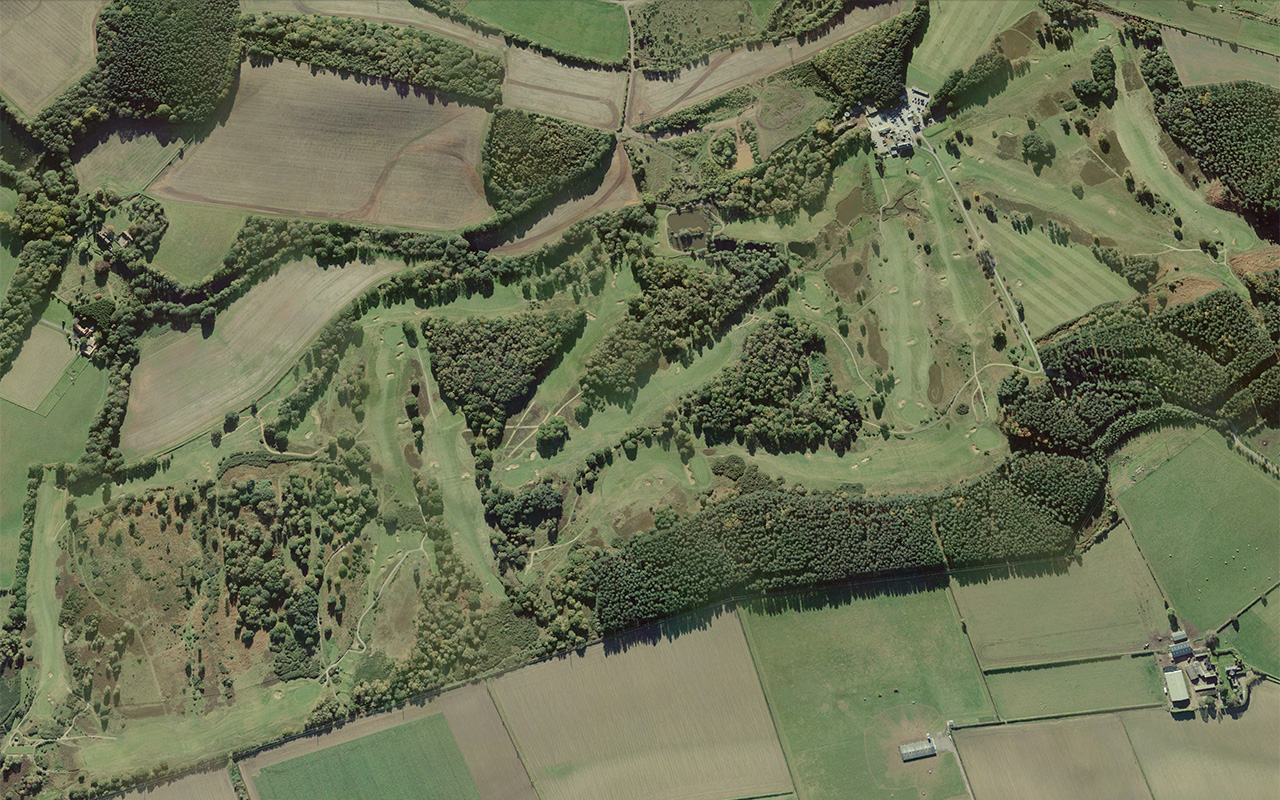
The varied landscapes of Hollinwell (Google Earth)
Near Robin Hood’s Sherwood Forest, the course is not as heavily treed as you might expect. Only the 7th through 9th holes feature encroaching woodland. In the early 1900s, club professional Tom Williamson replaced three hillier holes with an opening triangle characterized by a mixed pallet of heath and fescue. The back nine brings real topographical brawn, with the half-par 12th traversing the top of a slanting and dipping ridge, the dramatically downhill par-3 13th, the squeezed amphitheater green of the 15th, and the camber-fighting short-4 16th.
Many would argue, in fact, that all of these holes are stronger than the one we chose for our Eclectic 18, an uphill par 4 that serves as a transition to the hilly section of the property. Still, the 11th at Hollinwell is more than worthy, and it’s a testament to the depth of this course.
-
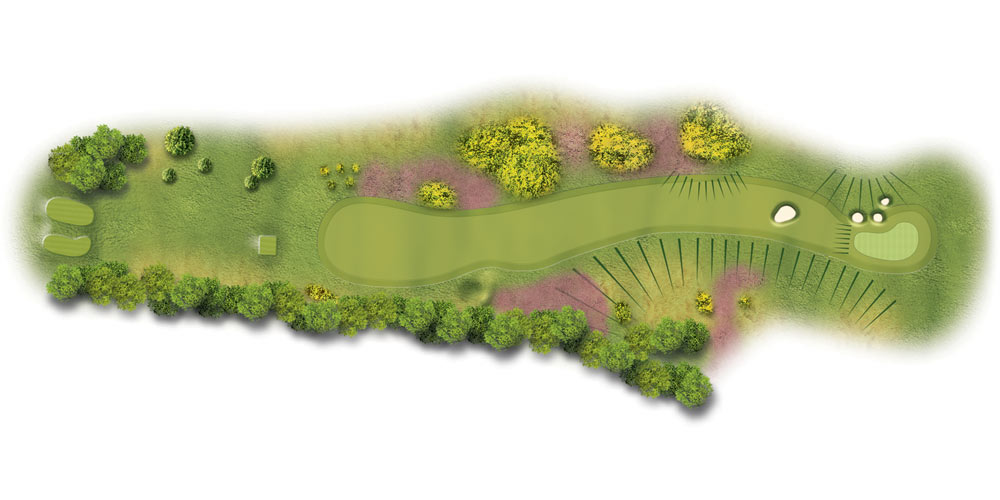
A diagram of the 11th hole at Hollinwell
-
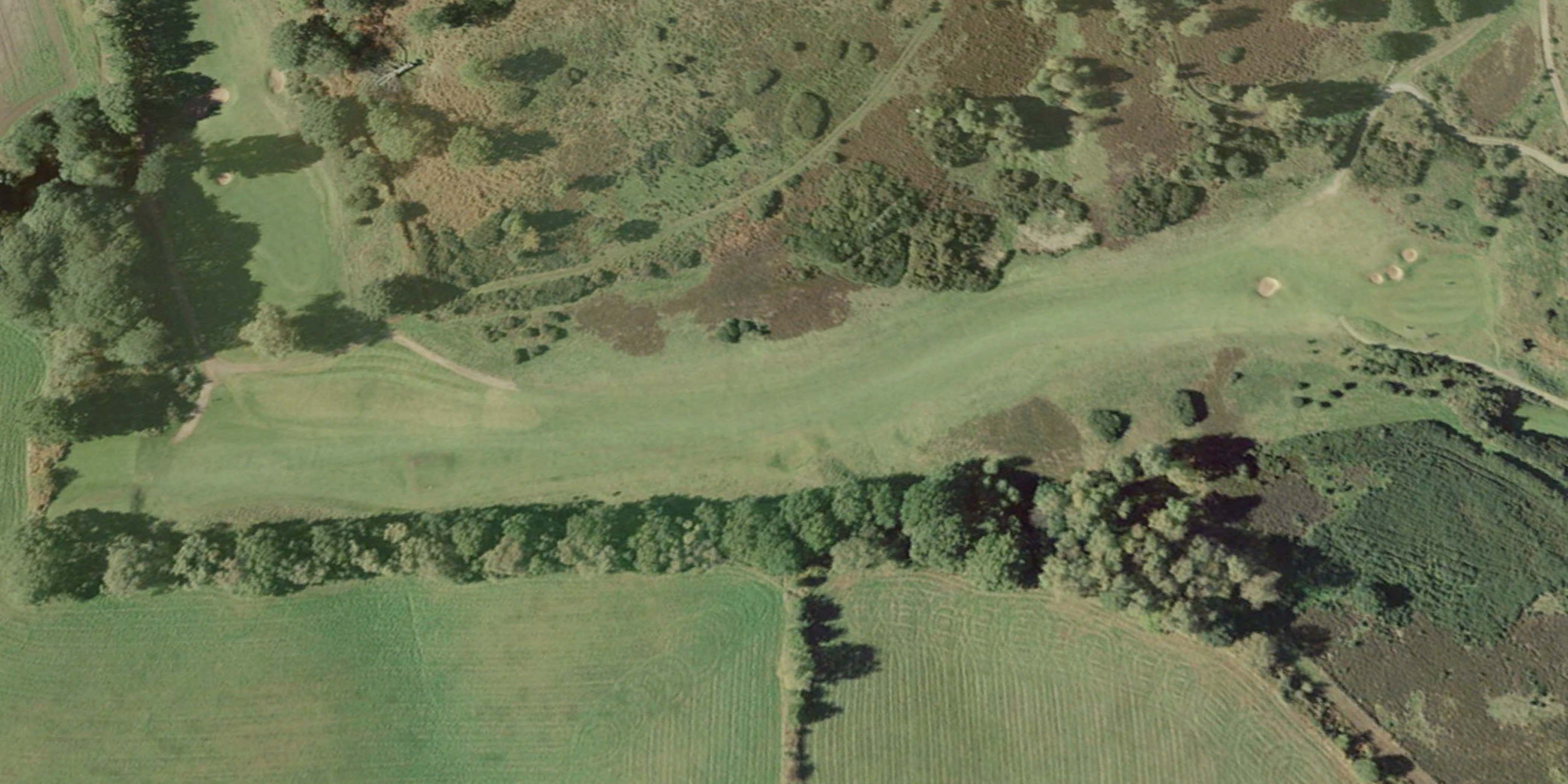
A Google Earth aerial of the 11th hole at Hollinwell
The hole chases up a narrow valley, shimmying between bulging landforms. The heather- and gorse-clad slopes snare tee shots of poorly executed line or length. Offset from the fairway and following the valley to the right, the green can be seen best after a drive that has gone bravely long and left. However, as three deep bunkers push up against the left side of the green, you might prefer the semi-blind approach from the right. The fairway remains fairly skinny throughout, though, so I suspect anywhere on the springy short turf will suffice. For those pressing from a bad-lie, a central pot short of the green will come into play. But beyond its strategic virtues, the 11th is just pretty, particularly when the hillsides are in bloom.
-
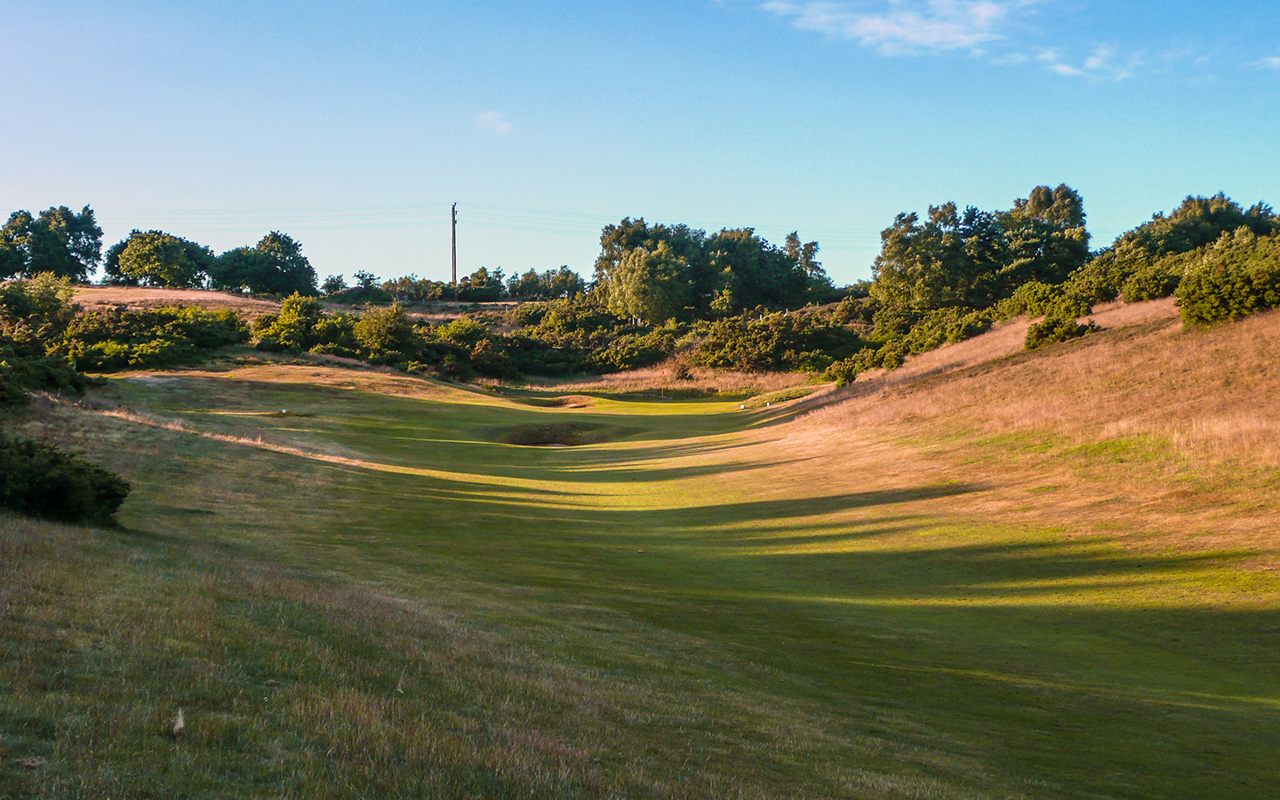
The 11th hole at Hollinwell. Photo credit: Clyde Johnson
-
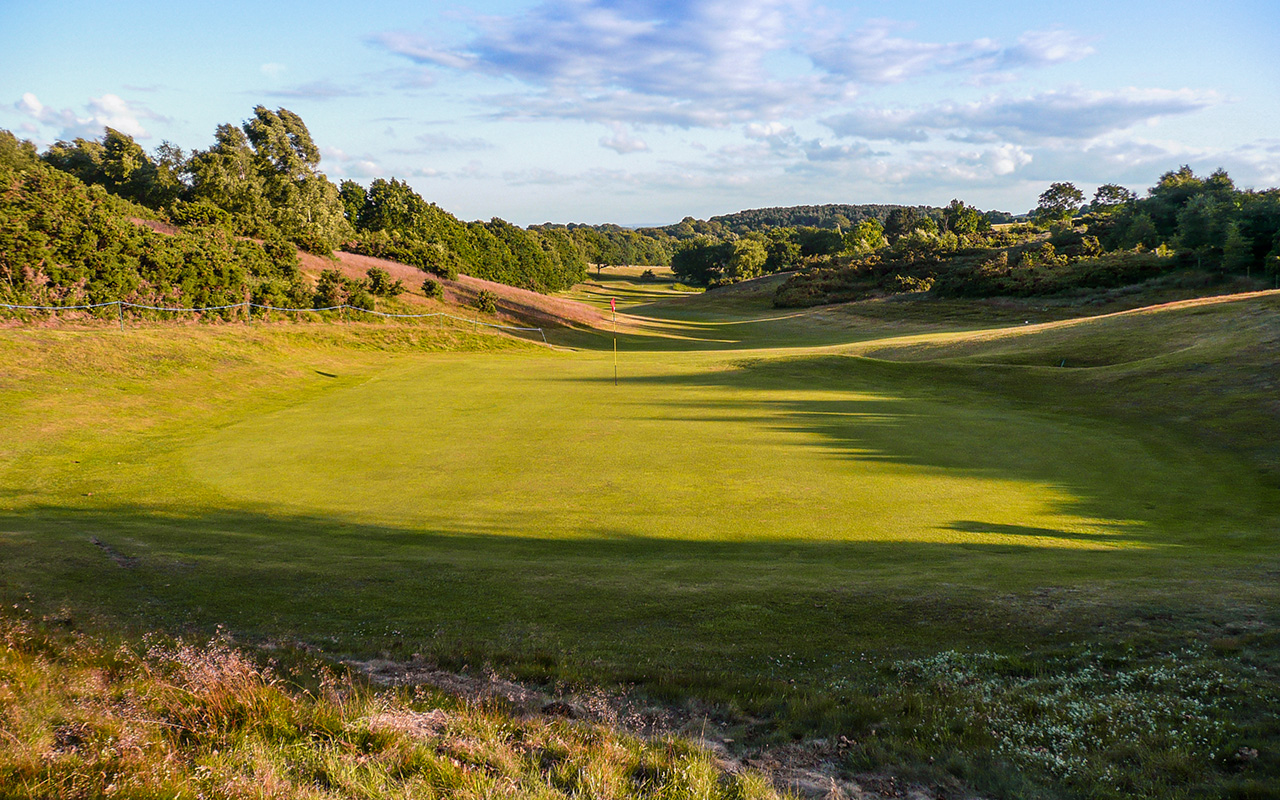
The 11th hole at Hollinwell. Photo credit: Clyde Johnson
(See a flyover and description of the hole on the Notts Golf Club website.)
It’s just one of many holes that makes golf in England supremely eclectic!
Eclectic 18 UK is the brainchild of golf course architects Jaeger Kovich and Clyde Johnson. Read more about the series here, and follow Jaeger and Clyde on Instagram.


 by
by 
